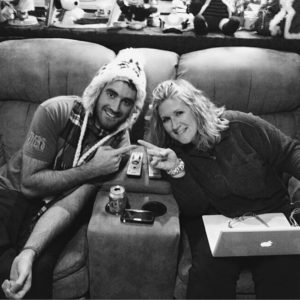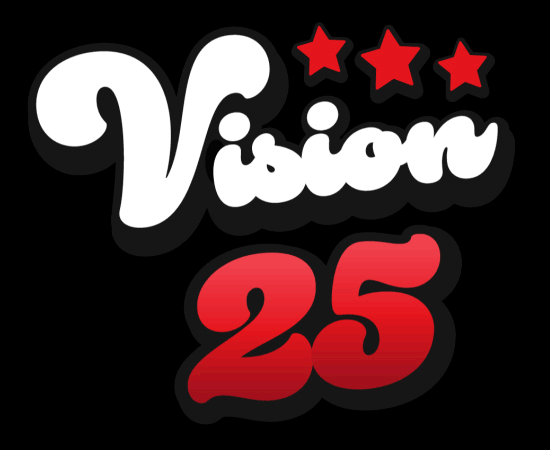
by Tom Darnall
Managing one print environment can be hard enough. Managing several at the same time can seem downright daunting. And for MSPs whose cost structures are highly sensitive to extra investment of time and resources, every second spent struggling with a print management issue can weigh heavily on the bottom line.
MSPs have another fundamental concern: customer satisfaction. Unlike an organization where print infrastructure is managed in-house, an MSP’s end users can decide to contract with another provider. That puts particular importance on retaining existing customers, which means that quality of service has to remain uncompromisingly high. Ongoing printing problems, even minor ones that might be tolerated elsewhere, can put an MSP out of business.
The catch is that, in addition to those challenges, MSPs also have a unique set of print-management requirements. Ideally, they want a single, uniform solution that allows them to deliver a core suite of services to customers while also providing a consistent management experience. Yet MSPs’ customers can have very different environments and a wide variety of printing needs, so any solution also has to be versatile enough to accommodate these disparities.
With that in mind, a print-management solution optimized for MSPs should meet the following criteria:
Powerful: Admins have access to a comprehensive suite of printer- and driver-management tools, including advanced features.
Intuitive: Profile settings as well as automated deployments and installations are easy to configure with granular precision.
Versatile: The solution integrates seamlessly with any environment without sacrificing reliability, functionality or ease of use.
Robust: Single points of failure and WAN dependencies are either reduced or eliminated completely, ensuring maximum uptime and uninterrupted printing.
Centralized: The MSP is able to fully manage the print environment for every customer, no matter how distributed, from a single pane of glass.
Consistent: The administrative experience is the same across the entire customer pool, regardless of differences in printer fleets or printing habits.
Streamlined: Administrative tasks are as efficient as possible and don’t require multiple interactions when one will do.
Scalable: The print-management solution effortlessly adapts as the customer’s print environment shrinks, expands or evolves over time.
Another consideration is that any print-management solution truly geared toward MSPs should also offer opportunities to add value. For example, one customer might want secure printing capabilities, whereas another wants to implement cross-platform mobile and BYOD printing. An MSP who’s able to provide this kind of added value with minimal physical infrastructure and low administrative overhead is going to be much more attractive to those customers.
PrinterLogic meets these demanding MSP criteria
Although traditional print-management solutions like print servers can’t fulfill all those demanding criteria, PrinterLogic’s enterprise print-management solutions are able to meet them without reservation.
PrinterLogic’s next-generation software uniquely combines the simplicity and reliability of direct-IP printing with the power of centralized management, enabling MSPs to manage the print environments of their entire customer pool from a single web-based console. This also gives PrinterLogic core capabilities like eliminating print servers, advanced printer deployments without the need for GPOs or scripts, self-service printer installations, and seamless integration alongside virtual solutions.
That’s not just theoretical. MSPs like Helion Automotive Technologies and Strata Information Technology have implemented PrinterLogic’s low-footprint, on-premises software solution for their customers in very different sectors. Helion, focuses on the automotive industry, supplying 650 car dealerships and their 28,000 employees with core IT services. Strata IT draws some of its largest customers from the healthcare industry.
Both MSPs saw a massive reduction in the time spent on print management after implementing PrinterLogic. Strata IT immediately experienced an estimated 50% drop in print-related support tickets, whereas Helion has leveraged PrinterLogic to cut 20 hours off each of its regular print-server migrations. The two MSPs also cited increased customer satisfaction as a result of their increased responsiveness, the reduced number of routine printing problems and the improved visibility into new areas of the print environment, such as consumable costs.
The next-gen features you expect from a next-gen solution
PrinterLogic also offers a SaaS counterpart. This zero-footprint, cloud-based solution offers feature parity with PrinterLogic’s proven on-premises software, giving MSPs and their customers the option of a flexible, enterprise-grade print-management solution that is infinitely scalable and incredibly cost-effective. Pioneer Technology is just one MSP that is using PrinterLogic’s SaaS solution to further its “cloud-first” philosophy and retain a competitive edge among peers in the banking, healthcare and retail industries.
And when it comes to adding value, PrinterLogic is able to provide native pull printing and mobile printing capabilities along with comprehensive print auditing tools. This kind of advanced functionality is increasingly sought after by organizations that are looking to harden their print security, provide tightly controlled but full-featured printing to their BYOD users, or gain insight into printing habits for the sake of cost-cutting and efficiency.
Tom Darnall recently joined the product team at PrinterLogic. He moved to Utah four years ago from Portland, where he held executive, product management and marketing positions at HP, Symantec, and other software firms. Tom received a B.A. in Communications from Brigham Young University and completed a summer executive MBA program at Stanford. Off the clock, Tom loves to explore the desert southwest, do landscape photography, and see live jazz in Las Vegas.
To learn more about The 20 and how we can help your business, be sure to check us out here.
Mother’s Day is this Sunday and, for many of us, Mom was our first life coach.
Our Mothers paved the way for what we’d become, so what better way to honor our Moms than to list some of the ways they’ve impacted our lives? Here are 6 members of our 20 family, each sharing a nugget of indispensable wisdom, courtesy of their Moms.
Enjoy!

Matt King, Channel Sales Rep.
[My Mom is] very punctual and instilled that in me at an early age. She would say, ‘It’s always much better to be an hour early than one minute late.’
– Our Channel Sales Rep, Matt King

Camden Rendon, Talent Acquisition Manager.
My Mom taught me that we all sweat salty and we all bleed red. ‘Treat everyone with the same respect, and don’t ever look down on anyone, because one day they might grow taller than you.’ ‘Say ‘yes ma’am’ and ‘no sir’ and always say ‘please’ and ‘thank you.’ ‘Don’t spend a lifetime on someone that won’t spend a minute on you.’ ‘Love fearlessly, and never forget to tell people you care about them.’ ‘It’s okay to cry, but pick yourself back up and put on a smile before facing the world.’
– Our Talent Acquisition Manager, Camden Rendon

Joe Parr, Manager of Backup and Disaster Recovery.
‘Always be there for your family, they are the only one you have.’
– Our Manager of Backup and Disaster Recovery, Joe Parr

Rudy Lucas, Marketing Program Manager.
My Mom, Martha Lucas, would always say, ‘Depend on no one. The only person that is going to take care of the old you, is the young you.’
– Our Marketing Program Manager, Rudy Lucas

Michael Copeland, Creative Director.
For me, my Mom was always big on respecting others. Which seems like the most basic of principles, and it is, but it was always an important lesson growing up; the top of the charts. Whether it was about respect being a two-way street, and that you needed to give it if you wanted it in return, or about how actually listening to someone is the sincerest forms of respect, my Mom drilled it (and continues to drill it) into both my Brother and me.
– Our Creative Director, Michael Copeland

Kayley Lantrip, Marketing Coordinator.
‘If it is in a song or a script, you’re allowed to say the curse word.’
– Our Marketing Coordinator, Kayley Lantrip
Happy Mother’s Day!
Want to join our awesome team? The 20 is hiring! Check out our open positions here.

by Camden Rendon
We have come to a day and age in which we are all trying to navigate a candidate-driven job market. This can be both a good and a bad thing. On one hand, you’ve got candidates being pickier about their next move, which means that retention rates are getting higher, and it seems to be a better fit for both sides. On the other hand, you’ve lost a lot of negotiating power, especially if you’re working with a strong, well-rounded candidate that is wanted by multiple different companies. Dallas has the fifth-largest tech labor force in the US, behind Silicon Valley, D.C., and New York City. According to the same website, CBRE estimates that more than 160,000 DFW residents work in the technology field. With so much competition, it can be hard to hire and keep great talent. However, the best way to do that is to build a company culture worth believing in.
There are three steps to building and maintaining your company culture:
- Lay it out
- Implement
- Study and revise
Lay It Out
In order to build a company culture, you’ve got to lay out what you want it to look like. Are you trying to build a “work hard, play hard” environment? Do you want to keep it buttoned-up and professional? Maybe you want to make your office dog-friendly or cater lunch once a week for your employees. Whatever it is, you have to start somewhere. Write down your company’s values, mission, and goals. From there, you can find and attract candidates that have similar views. Come up with traditions that you can make specific to your company, that employees look forward to participating in.
Implement
Once you’ve got an idea of what you want to accomplish, put it into place. Introduce things slowly, and make sure your current staff is on board. From there, bring in your newbies and help shift the culture to what you want it to be.
Study and Revise
It is imperative to continue to study the culture and revise as needed. If you see that something isn’t working, change it! I will say that consistency is key, so when you find something that works, stick with it. Building traditions, allowing employees to make friends with one another, and employee engagement are crucial to making it successful.
Building a company culture is extremely imperative to growing and maintaining a workforce. Now more than ever, candidates are looking for things that set companies apart – what will make your company a home rather than a stepping stone? Creating a culture and then hiring to fit within that culture makes retention much easier, as everyone has the same buy-in, beliefs, and values, and the expectations are set up front. Employees spend more time at work than they do with their own families, and they aren’t afraid to ditch jobs that don’t appreciate that. Appreciation goes a long way – as does a strong company culture.
Want to join our awesome team? The 20 is hiring! Check out our open positions here.
Employee Spotlight: Meet Joseph Deskin, Technical Onboarding Specialist
What do you do here at The 20?
My official title is Technical Onboarding Specialist, which means I help new employees learn the systems we use and teach them about the current policies and procedures that the support desk follows. I also help to develop new policies and procedures as the support desk grows.
Describe The 20 in three words…
Fun, Determined, Revolutionary.
As a kid, what did you want to be when you grew up?
As a child I really wanted to be a teacher. I always enjoyed the aspect of helping someone learn something new.
What’s the most challenging thing about your job?
Developing new training methods and documentation for current and new employees to follow.
What do you consider your greatest achievement?
My family.
What do you think is the most important quality necessary for success?
Giving your all, even in the smallest task.
What do you like most about The 20?
The people — 100%. We are a family who always does our best to lift one another up.
What do you like to do in your spare time? / What are your hobbies?
I enjoy gaming and streaming, hanging out with the family, and taking my dog out to the dog park.
Where are you going on your next vacation?
We currently have plans to go to New York.
What’s your top life hack?
The top life hack for me has always been a quote that was introduced to me when I was a teenager: “Show me your friends and I will show you your future.” This basically means that the people you place your self around and spend the most time with will help to develop the road ahead of you. This has been my main hack in navigating through life.
Want to join our awesome team? The 20 is hiring! Click here to view all open positions!
Employee Spotlight: Meet Tracy Crick, Executive Assistant
What do you do here at The 20?
I’m Tim’s assistant. I also create invoices, setup new agreements and update accounts for billing.
Describe The 20 in three words…
Beyond compare, exceptional.
As a kid, what did you want to be when you grew up?
An artist.
What’s the most challenging thing about your job?
Managing multiple tasks and making sure they get done at the expected time.
What do you consider your greatest achievement?
Seeing my kids grow up to be successful adults and having families of their own. I also volunteered at a non-profit organization that provides support for our military and their families — it was rewarding and a lot of fun. I think securing a job I enjoy is also a great achievement.
What do you think is the most important quality necessary for success?
I think it’s important to have a positive attitude.
What do you like most about The 20?
The people I work with.
What do you like to do in your spare time? / What are your hobbies?
I’m involved in the women’s ministry at church, I like to travel to see my kids and grandkids, and I also enjoy reading, gardening and sketching.
Where are you going on your next vacation?
San Antonio and Corpus Christi.
What’s your top life hack?
A butter knife works great as a screw driver.
What do you do here at The 20?
I am a Tier 1 Support Desk Technician on the Email Team.
Describe The 20 in three words…
Intelligent, diligent, and familial.
As a kid, what did you want to be when you grew up?
Professional snowmobile driver and pyrotechnician.
What’s the most challenging thing about your job?
Both the multi-tasking aspect, and knowing when to let something go. I tend to get focused on an issue and I want to resolve it, but sometimes it is better to let another pair of eyes take a look at it.
What do you consider your greatest achievement?
Being able to turn my passion into a career. Also, I used to own my own company: Harker IT, LLC.
What do you think is the most important quality necessary for success?
Drive! You have to be the person who works harder than most and stay focused on the end goal.
What do you like most about The 20?
1. The work environment for sure. The 20 feels more like a niche family than it does a job or company.
2. The number of different systems and environments we get to work on/in every day. Every day is a new challenge.
What do you like to do in your spare time? / What are your hobbies?
I like to spend time with my fiancée, my friends and my family who live near. I really like doing projects with my Dad.
My hobbies include cliff-jumping, floating rivers, pool basketball, etc. Anything outdoors.
Where are you going on your next vacation?
Puerto Rico
What’s your top life hack?
Using a lighter to open a bottle.
What do you do here at The 20?
My business card says “Channel Manager” but what that really refers to is everything that doesn’t fit into another group. I really try to be a resource for all of our members with any question that they might have. While I might not always have the answer, I can typically find the person that does. From initial on-boarding to Elite status and beyond, I’m here to help.
Describe The 20 in three words…
Driven, ambitious, and fun.
As a kid, what did you want to be when you grew up?
A race car driver or the drummer for the Rolling Stones. While my race car driver skills are behind me, I continue to stay ready to jump into the Stones job if Charlie were to retire. Keith, Mick… I’m here when you need me.
What’s the most challenging thing about your job?
Not knowing what the day will bring is challenging, but also exciting. Problem solving, training, counseling, listening, learning, etc. No two days are alike.
What do you consider your greatest achievement?
Chloe (14) and Devon (10) — my two beautiful daughters.
What do you think is the most important quality necessary for success?
It might sound boring, but just don’t quit.
What do you like most about The 20?
There is so much to like about The 20. The environment is great. Things move quickly up here. For those of you that have worked at Fortune 500-type of companies that move like the Titantic — this ain’t it. If something’s working, we’ll double down. If it’s not, we’ll pivot until it does. This keeps everyone on their toes.
What do you like to do in your spare time? / What are your hobbies?
I love spending time with my girls. We camp, travel and I drive them all over the Dallas area most weekends. I love being outdoors doing things like mountain biking, fishing and kayaking. My number-one hobby that’s been a constant all my life is music. I’ve played drums in bands since the age of 13 when my parents would drive me to gigs around East Texas.
Where are you going on your next vacation?
I’m planning a quick NOLA weekend trip right now since parade season just kicked off. But the next big trip with the Wood girls is probably going to be California. I’m not sure where, but the girls are pushing for LA or San Francisco. I’m pushing for Santa Barbara, but we’ll see who wins.
What’s your top life hack?
Always carry a pocket knife.
I think we’ve all seen those virus alerts to some degree or another that pop-up on our desktops telling us that we’ve been infected. They’ll typically pretend to be from legitimate companies like Symantec or Microsoft (in some cases, even using a fake Microsoft logo to establish credibility), and they always want you to call a fake number — which leads to paying money for a fake service.
I’d like to believe that anyone reading this blog is someone who can detect this kind of scam, but regardless, whether you’ve fallen for this in the past or not, new information on the source of this costly annoyance appears to have come to light.
And it takes us all the way to India, thanks to The New York Times.
The article begins by telling us that 1 out of 5 people who receive such alerts tend to contact the fake tech support centers, while 6% of users in general actually pay for the fake services – which is crazy in and of itself.
Nothing about those alerts look legitimate, but hey, there are A LOT of people on this planet…
The meat of the piece points to Microsoft and how they helped police trace who was behind these large-scale operations. Apparently, these scammers have their roots in New Delhi, the capital of India, which is also the epicenter of call centers in general.
According to the software giant, more than 11,000 calls per month about fake security warnings were being received. And many people as a result, lost significant sums of money to the fraud.
On Tuesday and Wednesday, police from two New Delhi suburbs raided 16 fake call centers and arrested more than 50 in connection with the scam.
The Scam
Fixing the non-existent virus could involve calling a tech support center, where an operator would talk a victim through a fake fix and then charge them for the work. In other cases, the bogus tech support team would call their targets themselves and pretend to be a Microsoft employee, bringing to their attention a virus or false claim that his or her system could have been hacked. Eventually, they ask for anywhere from $99 to $1,000 to fix the problem that doesn’t exist in reality.
Courtney Gregoire, an assistant general counsel in Microsoft’s digital crimes unit, perhaps said it best when she was quoted as saying, “This is an organized crime.”
No doubt.
The scam is incredibly lucrative according to researchers at Stony Brook University. They published a detailed study of fake tech support services last year that estimated just a single pop-up campaign, spread over 142 web domains, could bring in nearly $10 million in just 2 months.
Microsoft said it was working with other tech industry leaders such as Apple and Google, as well as law enforcement, to fight the digital epidemic, which is migrating beyond the English-speaking world to target other users in their local languages.
Microsoft has also published advice about ways to spot the fake calls and avoid becoming a victim.
Small business owners face an important question when it comes to IT support: should I hire an in-house IT employee or work with a vendor?
We recently looked at reasons why companies should outsource their IT. Check out this infographic to break it down further.
IT Support questions to ask when deciding between Full-Time Employee and Managed IT Department (MID)
• What is the cost for one full-time employee vs. going with a Managed IT Department?
• What do you get for what you’re paying? What is additional?
• What are the advantages and challenges of both sides?
• What’s the best choice for your business?

Want to learn more about the advantages of a Managed IT Department? Contact us today!
5 Reasons Why Your Company Should Outsource IT Support
Companies commonly outsource its accounting and bookkeeping duties, customer service, and HR management… so why should technical support be any different?
It shouldn’t.
Outsourcing provides a lot of benefits, especially to small businesses with limited resources. Plus, good IT support teams are especially hard for companies to build and maintain.
Here are 5 reasons as to why outsourcing is a good business move:
1. Reduces Costs
Reducing labor and equipment costs is one of the major reasons why companies outsource IT support. Employing a company to do the work for you is cheaper than hiring a whole IT staff. The employees’ initial training to get them onboarded, plus the regular training to ensure their knowledge is up-to-date, add to the cost as well.
Buying all the equipment you need for a functional IT department and maintaining the system also costs a lot of money. Removing these factors and paying a fixed cost contract will help you manage your annual operating costs more easily.
And If your operating cost is high, you will likely pass it on to customers by raising your product prices. This makes you lose your competitive edge.
2. Provides Support 24/7
If your business is one that needs to be open to customer calls 24 hours a day, that’s one of the reasons to outsource IT support. Instead of getting another IT staff, which will only cost you more, solely for answering calls outside of your normal working hours, outsourcing to a company will guarantee that someone is always available to help your customers.
A 24/7 team will also allow you to recognize flaws and bugs even before they affect your infrastructure and business.
3. Adjusts According to Demand
When the demand suddenly increases, and more calls start coming in, what do you do if you have a permanent staff?
Hiring temporary employees poses a lot of issues. You don’t know when the demand decreases, which will force you to terminate them immediately. You’re also not sure of the technical skills and personality if you’re in a rush to get someone onboarded.
Meanwhile, an IT company can easily scale up or down depending on your needs because of their access to vast resources.
4. Gives Access to Cutting-Edge Technologies and Industry Experts
Security of your data and your customers’ data is paramount. That’s why Facebook is in a lot of heat nowadays — its platform is vulnerable to third-party entities mishandling the users’ data. Even large companies are susceptible to attacks, with hackers successfully gaining access to JP Morgan’s 76 million households plus 7 million small businesses in 2014.
To keep your data safe and secure, however, you must have the newest technologies and the knowledge of industry experts. You and your staff must be up-to-date with the industry standards, which might be hard to do if you’re a small-time player.
Outsourcing solves this problem. It’s their job to get cutting-edge technologies and train their employees regularly so you don’t have to do it. Getting access to these will also ensure that your systems are working smoothly.
5. Allows You to Focus on Your Business
When you no longer have to worry about the security and integrity of your system, it allows you to focus on what you need to do in order to grow your business. Your employees, without network interruptions and possibly the added IT responsibilities, will also be able to perform with their best for the company.
You can focus on improving your products and services while the outsourced IT team deals with the technical issues so you and your staff can keep on working without worry.










